Intro #
I was wondering how changing the motor type, spring hardness and gears ratio influences the current consumption of a motor. I took two motors of the similar speed (around 32000 RPM) - the stock Specna Advanced motor with weak magnets (ferrite) and an SHS/Kublai (they both give the same results) high torque motor with much stronger, neodymium magnets and 16 TPA. I also used a much slower (around 22000 RPM) and higher TPA (28) motor for comparison. I measured all of them using G&G M100, G&G M120 and Guarder SP130 (which is often considered to the strength of M135) springs, and for faster motors, using two gears ratio - Specna stock 18:1 and SHS 13:1. All the tests were performed on a fully charged (12.6V) 2.2Ah 50C Rhino battery. I have recorded the current drawn while doing a short round of full-auto shooting on a Specna Edge gearbox.
I was interested in following parameters:
- Peak-to-peak current - which is an inrush motor current (spin up current)
- Max auto current - this is the maximal current drawn when the motor settles at full-auto shooting
- Average auto current - this is the approximate average current during the full-auto shooting. Since the current during shooting is not constant and the average is not properly calculated but, instead, I just choose the level somewhere in the middle of the graph, this value is the least precise.
Please note that the current drawn depends on the resistance between the motor and the spring. This may depend on the shimming, motor height regulation and other factors thus the values might be different on your gun (but I would expect them to be at least close). I find the difference between different setups to be the most interesting here.
How its measured #
The measurements are done using my oscilloscope current meter, read the dedicated article about it to get the details and understand how to read the oscilloscope screenshots presented here.
The measurements #
TLDR; below you will find a lot of oscilloscope screenshots together with some textual comments for each of them. Feel free to skip to the table with the data or to the conclusions.
Specna motor, M100, 18:1 #
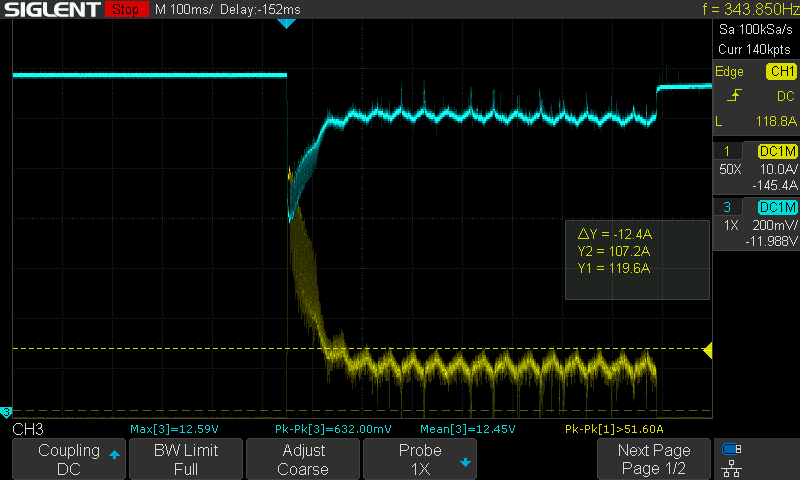
The inrush current of just around 50A, around 12.4A max current on auto and around 9.5A average. We see the RoF of around 23.
Specna motor, M120, 18:1 #
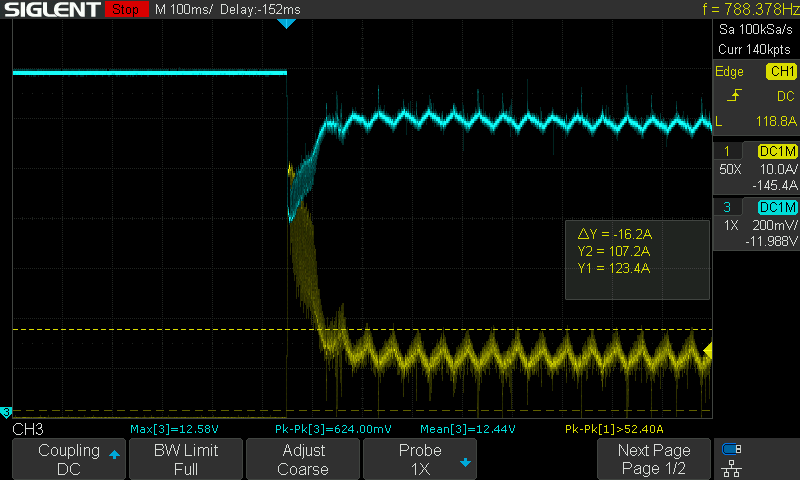
The inrush current stays the same, max current on auto increased to 16.2A and around 11A average. The RoF is around 21.
Specna motor, SP130, 18:1 #
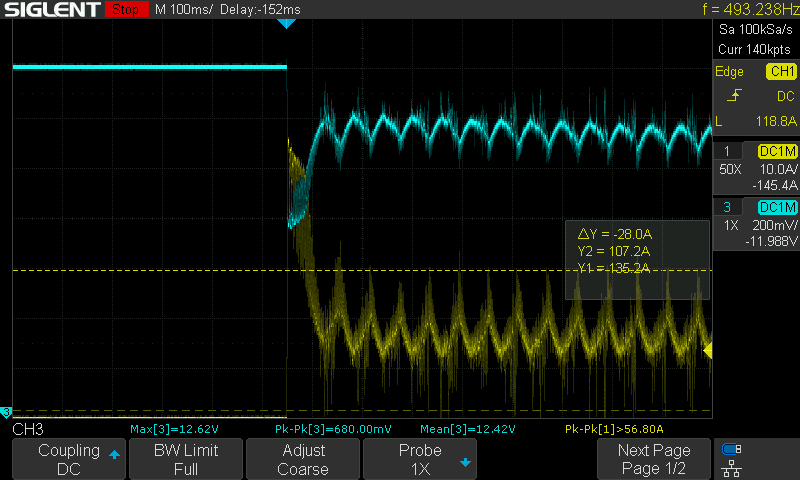
The inrush current increased by few Amps to 56.8A. We have a significant increase of current on auto to 28A max and around 16A average. The RoF dropped to 18. Note how the amplitude of the current draw on auto increased a lot as well.
Specna motor, M100, 13:1 #
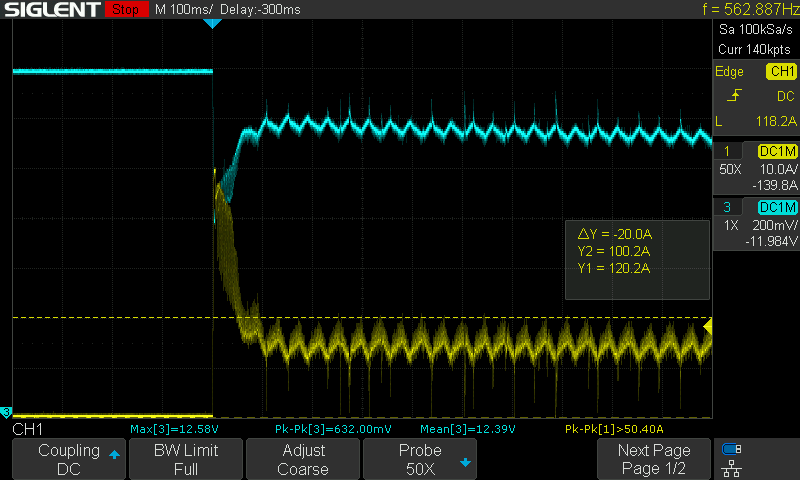
Changing the gears to faster 13:1 does not influence the inrush current. We see 20A max current on auto compared to 12.4A on 18:1 and 15A instead of 9.5A on average. This is around 50% increase! The RoF jumped from 23 to 26, though!
Specna motor, M120, 13:1 #
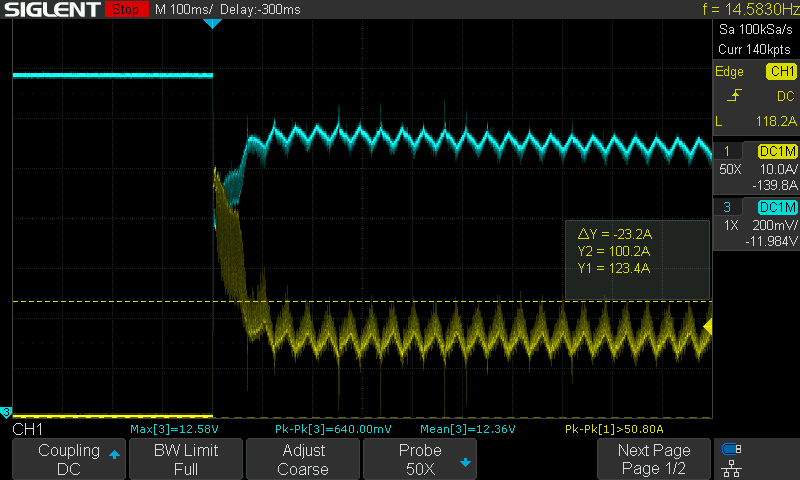
Increasing the spring to M120, increases max auto current only slightly - to 23.2A and the average to 17.2A. The RoF drops to 28.
Specna motor, SP130, 13:1 #
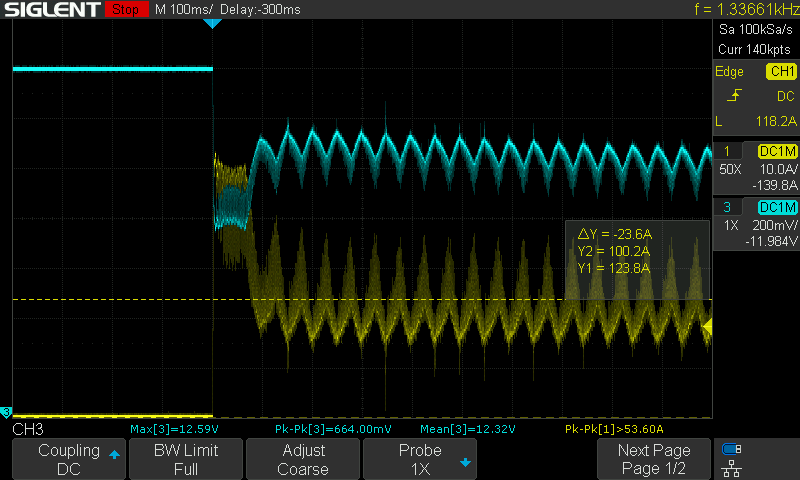
The strong SP130 spring makes the motor take a whooping 36.6A max and 23.6A on average while reducing the RoF to just 21. This is roughly the same as on M120 with 18:1 gears but with twice the current consumption! Note that the inrush current, again, increased by around 3 Amps to 53.6A with this spring.
16TPA motor, M100, 18:1 #
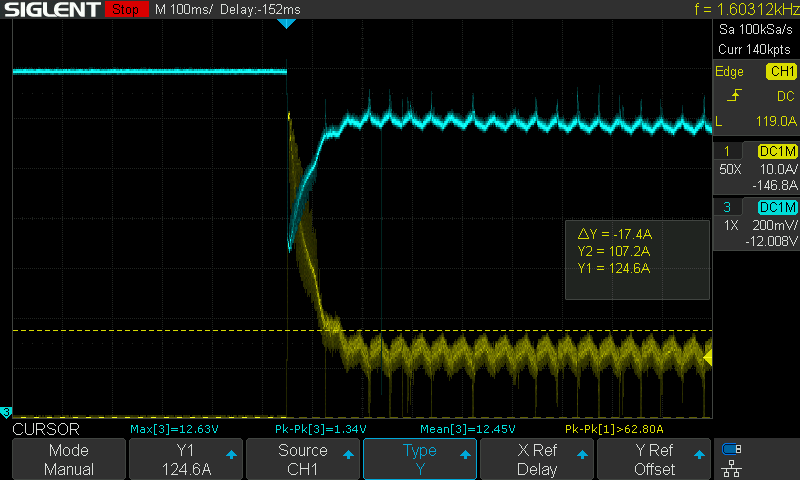
First of all, with the 16TPA Kublai / SHS (they give the same results) motor, the inrush current jumped from around 50A to around 62A. With the weakest spring we get 17.4A max and around 14A average auto current which is about 40% increase while the RoF was 25-26 (which is increase of just 2 compared to the stock motor).
16TPA motor, M120, 18:1 #
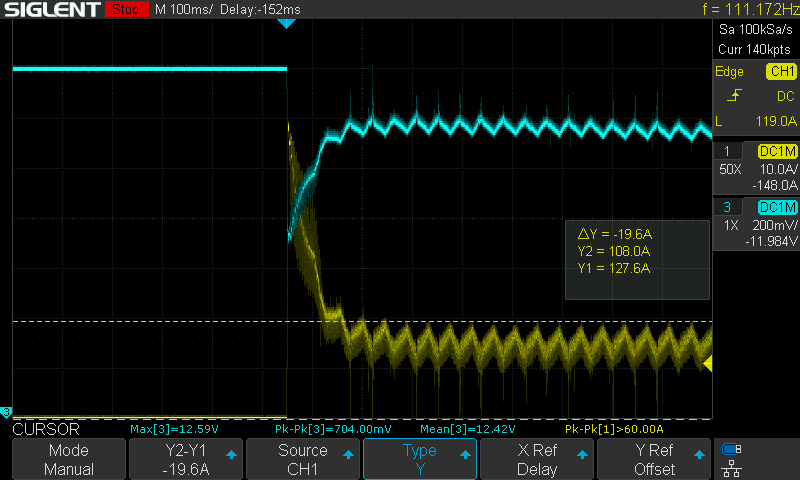
Compared to the M100, the max auto current increased to 19.6A from 17.4A and average to 17A from 14A. RoF dropped to 23 which is still 2 more than on the same spring but stock motor for the price of 50% increase of current.
16TPA motor, SP130, 18:1 #
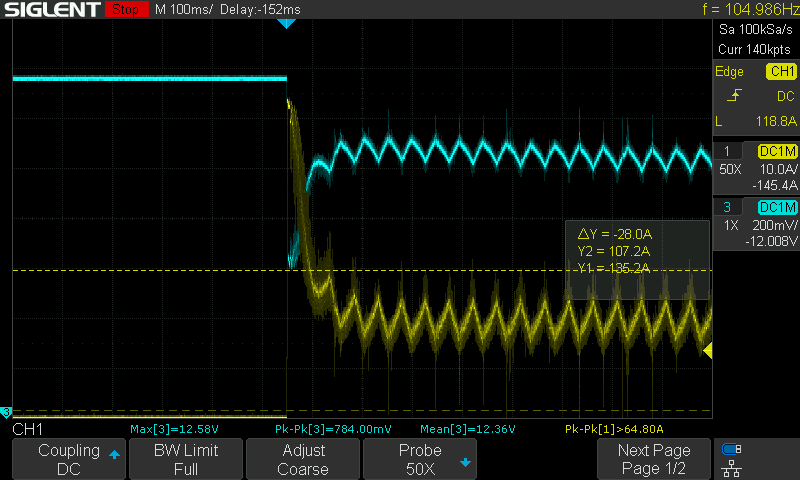
As with other setups, with SP130 we can observe the 4A increase of inrush current (to about 64.8A). Also the max auto current increased to 28A while average was around 18A which is only slightly more than with M120 and actually on par with the current used by the overloaded stock motor. RoF was 21 RPS.
16TPA motor, M100, 13:1 #
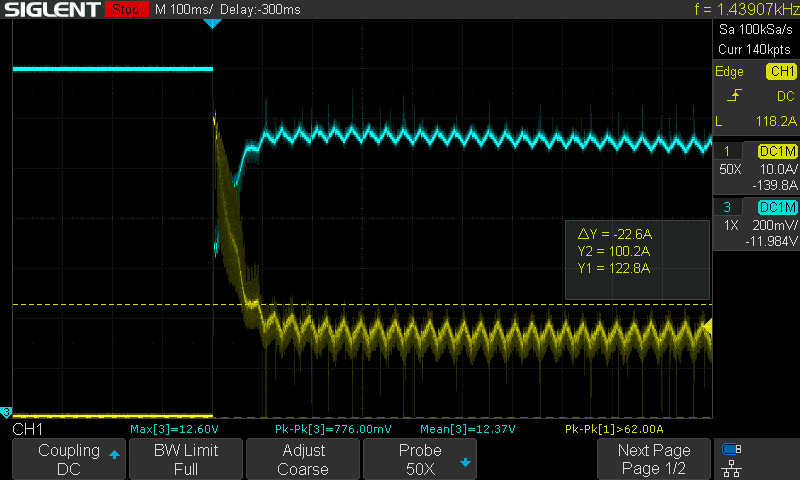
Changing the gears to 13:1 did not result in any noticeable change in inrush current which was around 62A. The auto current increased from around 17.4A/14.4A to around 22.6A/17A which is around 30% increase. The RoF went from 25 to 31, though!
16TPA motor, M120, 13:1 #
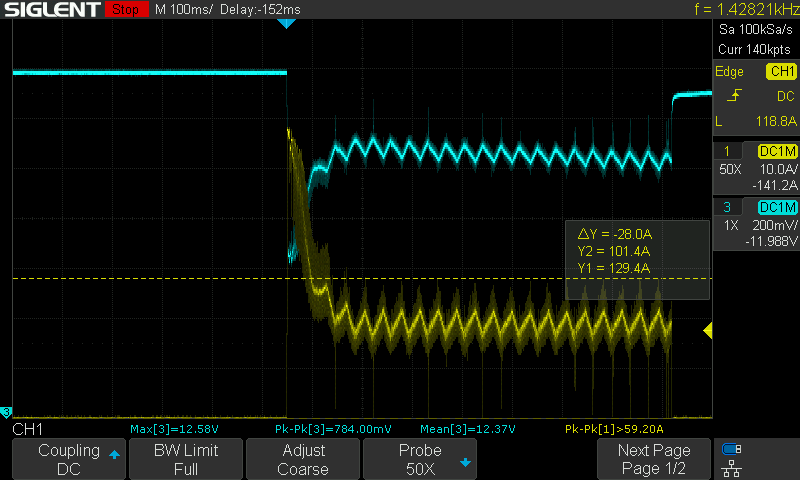
The stronger M120 spring took 28A/18A auto current, while reducing the RoF by 3 which is still around 4 bigger than on stock motor, while the average current isn’t much bigger.
16TPA motor, SP130, 13:1 #
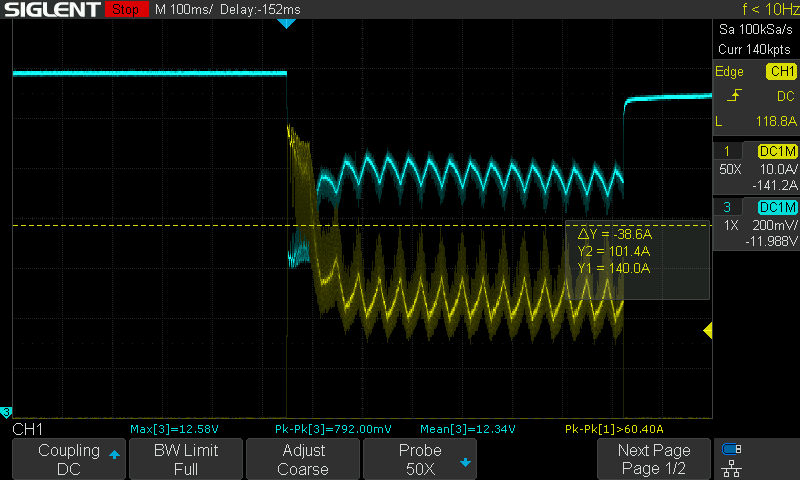
This time the inrush current did not increase over the value on weaker springs. The auto current got to 38.6A / 24A, though while the RoF was still 25 RPS so no sudden drop can be seen here.
28TPA motor, M100, 13:1 #
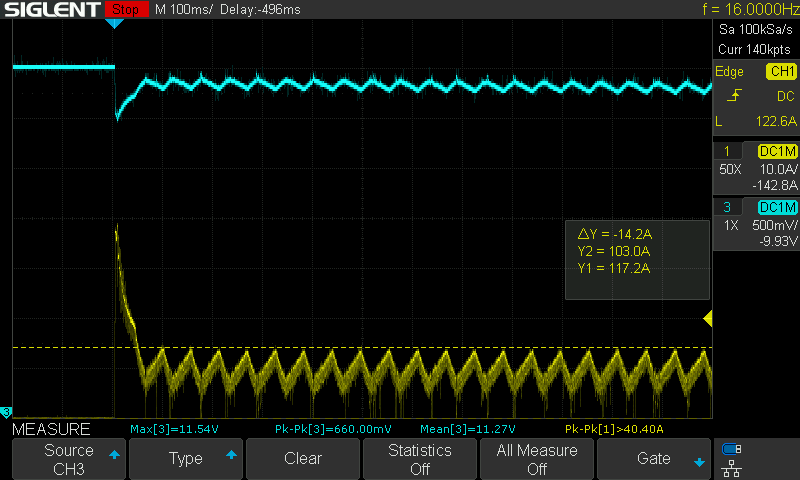
As can be seen, the interesting parameters are very comparable to the Specna Stock 18:1 case, with the exception of smaller inrush current. The RoF is slightly smaller and the current consumption slightly bigger, though. If we compare it with 16TPA, we get 1/3 smaller RPS with 40% less current.
28TPA motor, M120, 13:1 #
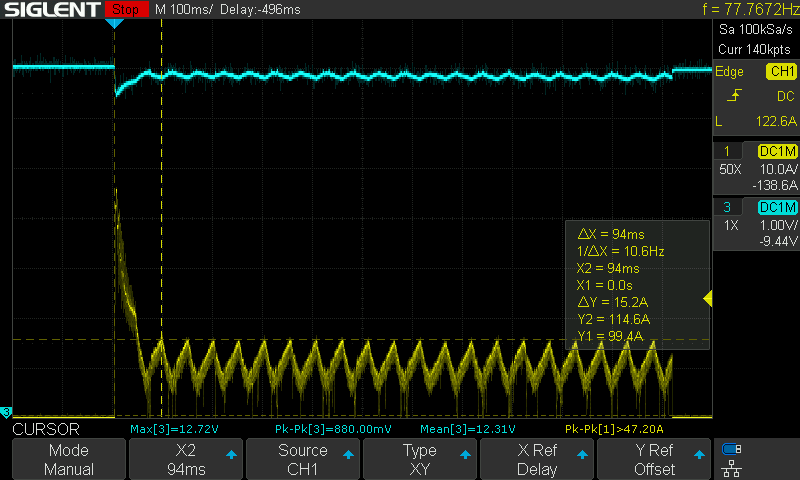
Interestingly enough, the acutal RoF did not get smaller but slightly bigger after changing the spring. The current consumption compared to M100 is, as usual, only slightly bigger. If we compare it with 16TPA, we get 1/3 smaller RPS with 40% less current.
28TPA motor, SP130, 13:1 #
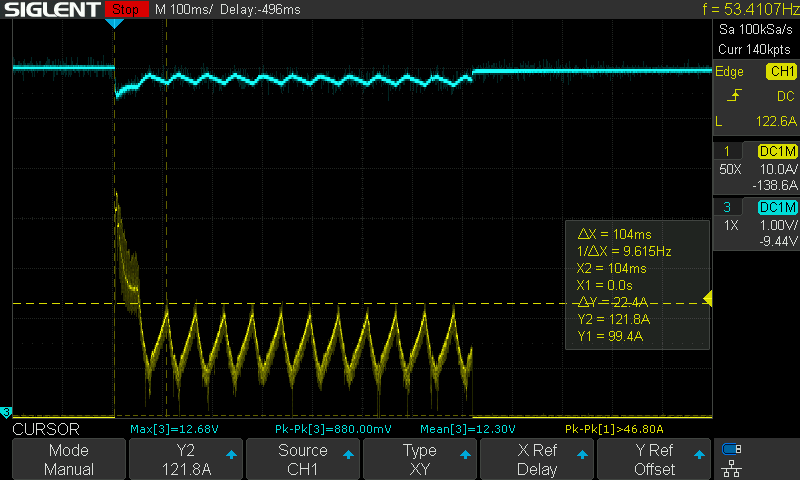
Now, here, we finally see when this motor may give you some advantages - with smaller current it deliver the same RPS as the Specna stock setup. If we compare it to the 16TPA motor, the currents are much smaller but also the RPS is heavily reduced (from 28 down to 18) so there is completely different workload.
As a table #
Each field shows the inrush current / max auto current / average auto current / RoF.
| Motor | M100 | M120 | SP130 |
|---|---|---|---|
| Spenca Stock 18:1 | 50A / 12.4A / 9.5A / 23 RPS | 50A / 16.2A / 11A / 21 RPS | 56.8A / 28A / 16A / 18 RPS |
| Spenca Stock 13:1 | 50.4A / 20A / 15A / 26 RPS | 50.8A / 23.2A / 17.2A / 24 RPS | 52.8A / 36.6A / 23.6A / 21 RPS |
| 16 TPA 18:1 | 62.8A / 17.4A / 14A / 25.5 RPS | 60A / 19.6A / 17A / 23 RPS | 64.8A / 28A / 18A / 21 RPS |
| 16 TPA 13:1 | 62A / 22.6A / 17A / 31 RPS | 59.2A / 28A / 18A / 28 RPS | 60.4A / 38.6A / 24A / 25 RPS |
| 28 TPA 13:1 | 40.4A / 14.2A / 10A / 19 RPS | 47A / 15.2A / 10.4A / 21 RPS | 45.2A / 22.4A / 14.4 / 18 RPS |
The conclusions #
First interesting and somewhat unexpected result that you can notice is that the inrush motor current does not change much when we change springs - it is almost the same for given motor type and only slightly (3-4A) increases on the strongest spring.
Unsurprisingly, the full-auto shooting current increases with stronger springs. It can be up to 60% increase between M100 and SP130 spring. The increased resistance causes the motor to spin slower decreasing the overall rate of fire. Even though the Specna and SHS motors have the same speed without load, thanks to stronger magnets, the speed under load is higher for SHS which translates to around 3 RPS more on auto but for the price of considerably more current on auto (around 50% more). That is true for 18:1 gears, on 13:1 the current increase was smaller (more like 30%) while the RoF increase was much more noticeable (around 5).
I calculate RoF or a fully spun up motor but the spinning up itself (which translates to trigger responsiveness) is also better on SHS motor, although, quite surprisingly, it is barely visible on the graphs. It might be worth retesting with different time scale and focus on the first shot to precisely measure the actual difference.
While the current increase between M100 and M120 was around 30% and from M120 to SP130, around 40%, in case of Specna motor on 18:1 gears, the increase from M120 to SP130 was around, much higher, 75% which could indicate the motor gets overloaded at this configuration. Interestingly, while the 16TPA motor took around 50% more current with the same spring on other configurations, with SP130, both were on par. Also the RoF dropped slightly more than expected. On faster 13:1 gears, the motor did fine, though, even with the hardest tested spring.
The 28TPA motor did some interesting results. On M100 it wasn’t performing better than stock setup and the RoF was even smaller than on M120. This makes me think this motor is just to strong for M100. Only after moving to M120 and them SP130, we can see that this motor can handle them without taking too much current. That also translates for the smaller RoF as the 13:1 gear ratio can’t make up fo the speed loss of the motor. In general this motor does not make sense to me on a regular build if you are using M100 spring only (so all of the 350FPS limited builds). For the higher springs it is better than Stock Specna configuration as it takes less Amps giving the same RPS results (but you have to pay for the motor and new gears) but is just worse than a 16 TPA, unless you are afraid of those 30A+ currents.
The worst case (from the electrical current point of view) required 65A of inrush current and up to 38A on auto (with average being lower). This value was 35% bigger than on different configuration for the same spring (the RoF was considerably higher, though). This means that in order to be safe, at least a 1500mAh 25C/50C battery should be used. It also clearly shows that the simplifications made by MOSFET manufactures claiming their device is good up to M1XX spring might be dangerous or very conservative (but you never know which one they choose).